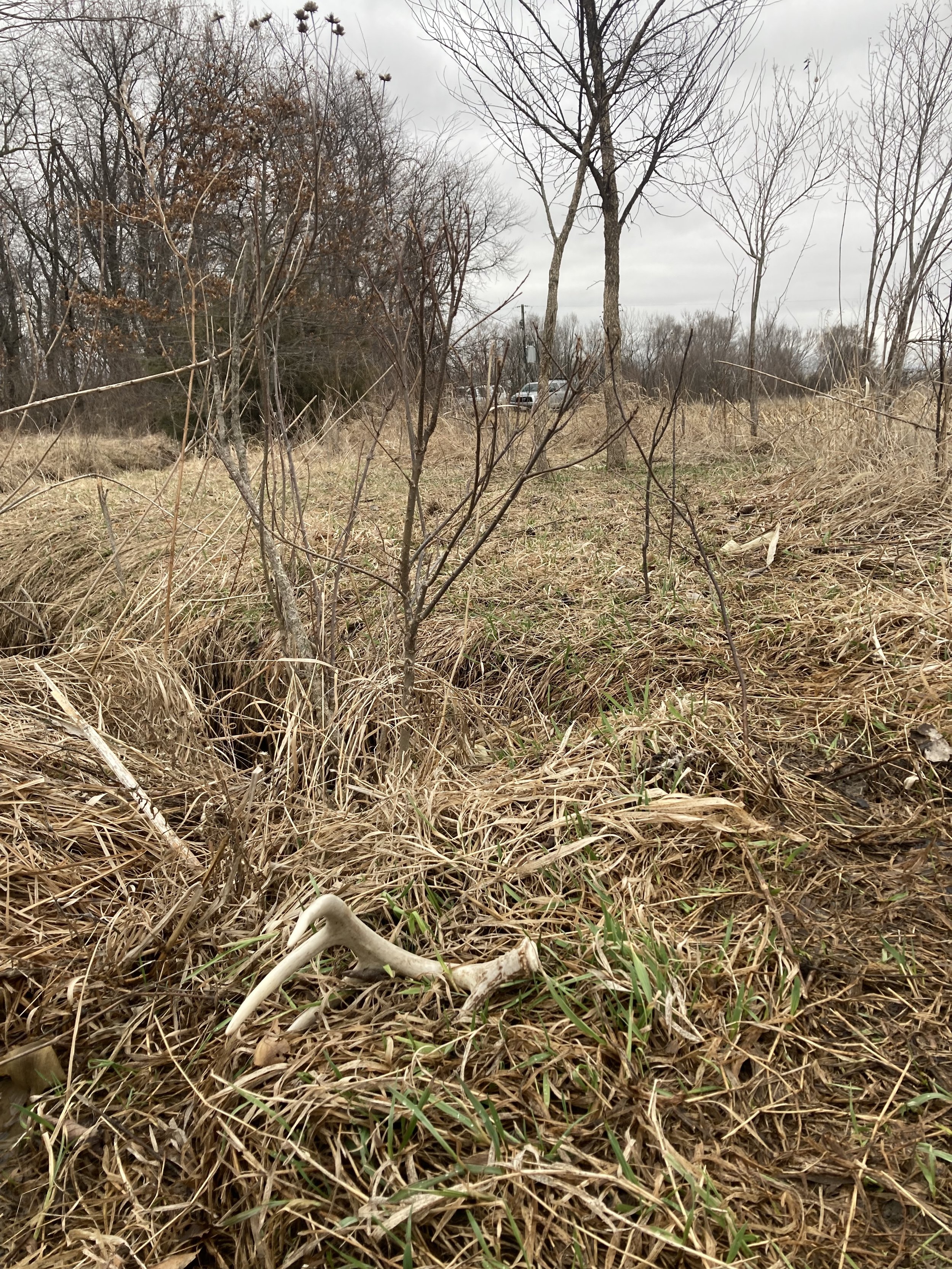Shed Hunting Tips That Actually Help (part 1)
I first fell in love with shed hunting in the Spring of 2015. It was my first step into deer hunting, and I’m thankful that my fast progression into hunting worked out that way. In those early days, finding a shed antler seemed almost impossible, but I didn’t want to give up before I found my first shed. To compensate for my lack of understanding about deer behavior I figured that if I was willing to cover every square inch of deer habitat, and consult every shed hunting friend and online article, I would increase my chances of finally picking up a shed. So that’s what I did, and after doing all of the research I started to realize that there weren’t a lot of the tips out there, and most of them were the exact same from one article to the next. Now as I embark on my tenth shed season I can look back and tell you which of those tips work, which are unlikely to work, and even some new ones that you probably won’t see anywhere else.
Shed Hunting and Panfishing
My Biology prof in college was one of my favorites. He worked in the fisheries world for many years before switching to white-collar work and he would relate his past experiences to us in class almost every day. One thing I remember him saying is that 90% of the fish are found in 10% of the water. What he meant by this is that not all areas where fish can be found will actually contain fish. In order to catch a mess of bluegills the angler has to locate where they are spending their time. The same principle applies to shed hunting. I once heard Mark Kenyon of Wired to Hunt refer to this concept with shed hunting in the terms of the 80-20 rule of business- 80% of the business comes from 20% of the marketable ideas. When applied to looking at a farm with whitetail habitat it can be assumed that there are not sheds scattered throughout the entire farm. Instead 80% of them will be found in %20 (I would suggest even less) of the deer habitat on the farm. Understanding this reality has really helped me focus my efforts on searching only the super high odds habitat areas. So what are these areas, and how do I find them?
South Facing Shed
Here’s a shed I found a few years ago in a spot that my buddy and I zeroed in on based on its proximity to good deer habitat, food, and its southern exposure.
Winter Habitat
WIth so much land being low odds for finding sheds, the way I first narrow my search areas is by identifying large sections of deer habitat (Knowing that you may be reading this in a state that is vastly different from Iowa, where I’m located, I understand that habitat may not be the biggest limiting factor for your local whitetails, so if food is more of a limited resource in your neck of the woods, sub that in for this first priority to start your search). This is a lot more simple than it sounds- I basically am looking for upland forest areas- something that will provide a lot of trees and a lot of dry ground. I also use my evening drive home from work to scout for areas where large groups of deer are congregating. And if I can’t locate them that way, I let roadkill clue me in on where deer are traveling. Once these primary high traffic areas are identified it's time to narrow down the spots within a spot. This is a major tip that those articles I read early on didn’t include.
Gear Highlight: Shed hunting is a walking game. “Miles for the piles” is the shed hunters’ creed, and if my feet are going to handle all of the earth pounding each season demands I am going to need some excellent footwear to keep my feet supported, comfortable, and dry. My two choices are the LaCrosse Alpha Agility (Alphaburly and Aeroheads should be good as well) boots for the colder, muddier portion of shed season, and then I switch to my uninsulated Crispi hiking boots for the warmer end of shed season. I purchase all of my boots from either BlackOvis or Camofire on great discounts. Besides saving money BlackOvis offers extensive reviews and product videos to help make the purchase as painless as possible.
Southern Exposure
One of the first shed hunting tactics I learned while doing my early days of research was the power of south facing slopes. This tip was repeated in every single article, but the problem with this is it takes property that actually has the topography to contain south facing habitat. Since most of my shed hunting at that time was limited to two or three public areas I basically wrote this tip off and continued to do so for years. It wasn’t until my 5th or 6th shed season that I finally got intentional about identifying south facing features, and I had my best season at that time. Since then I have made this my top priority for identifying where to look for sheds whether I’m driving down the road, or e-scouting on Spartan Forge for new permission ground. If it’s not south facing, I consider it to be in the 80% of the ground that only contains 20% of the sheds.
This concludes Part 1 of the How To Find Sheds series. More to come later this week!

